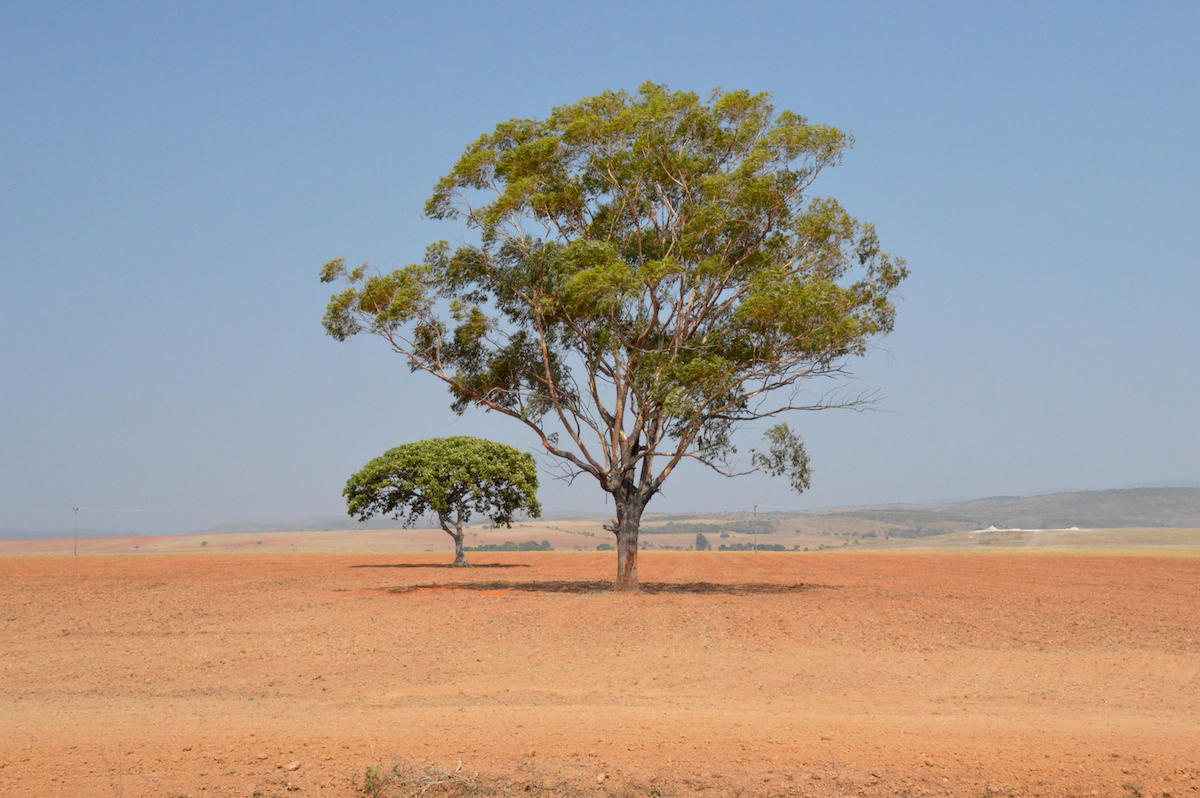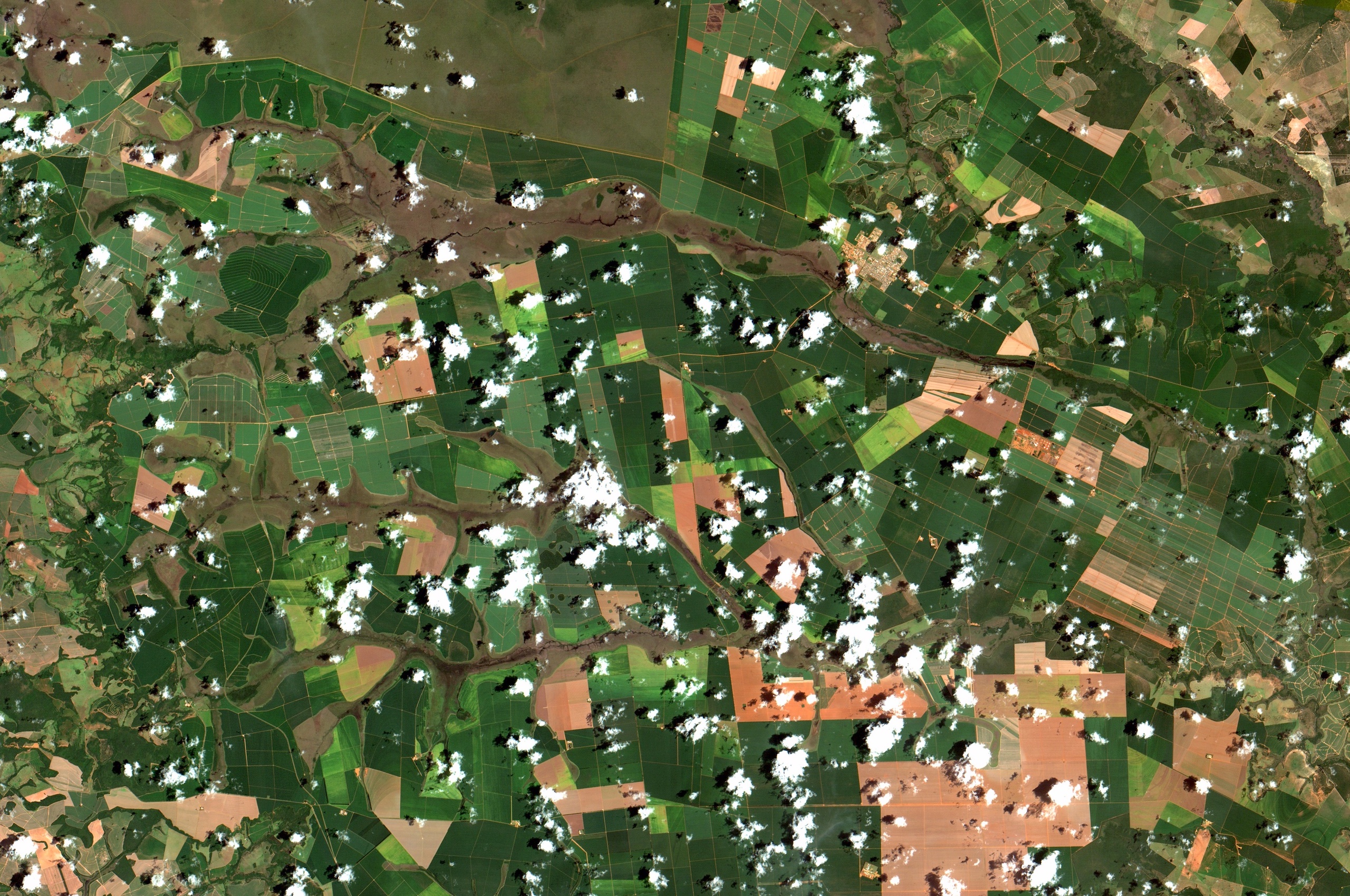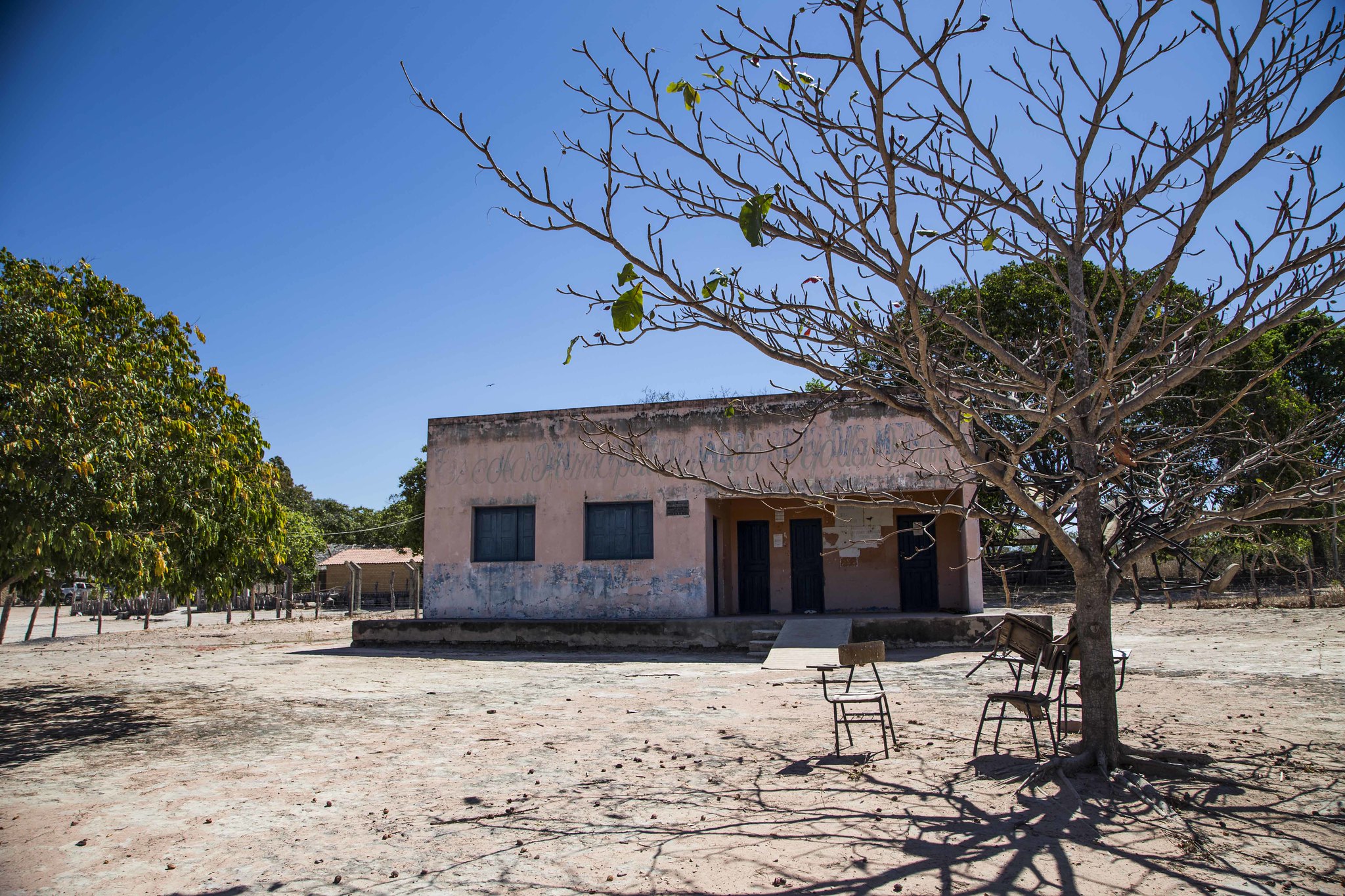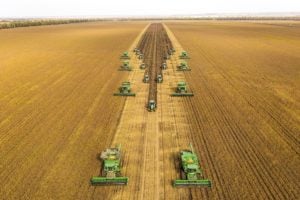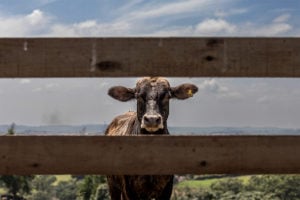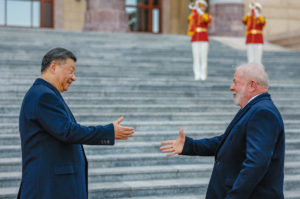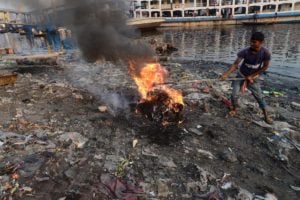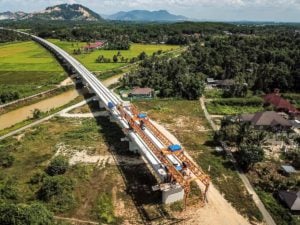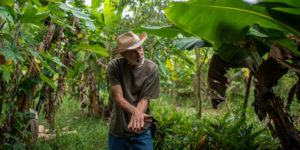With revenues of US$53 billion, Chinese agribusiness COFCO International is one of the world’s largest food processors and traders, and concentrates 60% of its grain and oilseed assets in South America, partly leveraged by $3 billion in loans linked to sustainability targets. Yet though it has continued to grow in the region with the support of such green finance, the company has provided little and opaque information on the progress of its environmental commitments.
In 2020, COFCO International promised to achieve full traceability of its direct soy suppliers in Brazil, its main partner in South America, by this year. The aim was to ensure that the company does not buy soybeans grown on land that has been illegally deforested.
With the deadline looming, the company appears to claim to have reached 80% of its target, according to its latest sustainability report released in June. But this information is just one line in a document that is over 80 pages long, and there are few details of this progress on its digital platforms.
Elsewhere in the report, Helen Song, COFCO International’s chief financial officer, said that “each year, the proportion of sustainably certified commodities in our portfolio increases.” The company went on to say that it had achieved “all social and environmental and traceability targets connected to direct suppliers in relation to our sustainability-linked loan.” But Diálogo Chino was unable to find further information in the report and across other platforms on which targets the company is referring to, nor on the proportion of certified commodities in the company’s portfolio.
In 2021, during the United Nations’ COP26 climate conference in Glasgow, COFCO International, along with 11 other trading companies, signed a declaration committing to produce an action plan to eliminate deforestation from their production chains. The proposal was presented at the next summit, COP27, and covered soy production in the Cerrado, Amazon and Gran Chaco, with a target to achieve this set for the end of 2025. However, the document, although available on the internet, does not clarify what actions the signatories are implementing to fulfil the short-term promise, though they are said to be required to produce “implementation plans”, and report on their progress at the upcoming COP28 summit.
Trading companies may publicly make commitments in vulnerable ecosystems, “but we need to see results happening on the ground,” says André Vasconcelos, global engagement leader at Trase, a supply chain monitoring platform. “They need to be more transparent so that society can follow their efforts; this is a shortcoming of the entire chain.”
Diálogo Chino approached COFCO International for comment on its traceability efforts and the information it has made publicly available, but the company did not respond to requests. Agrosatélite, the Chinese company’s partner in the remote monitoring of farms, also did not respond to requests for information.
Risk of deforestation
Analysis released by Trase in March showed that in 2020, COFCO International was exposed to the risk of having bought more than 12,000 hectares of soy from then-recently cleared land, mostly in the Cerrado.
“Although large commodity trading companies such as COFCO have zero-deforestation commitments, these commitments are less clear and often less restrictive for non-forest vegetation formations, as in the case of the Cerrado,” says Vasconcelos. Because it is mainly composed of savannahs, the Cerrado has fewer legal protections from both the Brazilian government and international laws – such as the recently approved EU anti-deforestation law – than forest biomes, such as the Amazon.
This is not just a risk: an investigation by investigative journalism platform Repórter Brasil found that, in 2021, COFCO had bought soy from deforested areas in the state of Mato Grosso, which is covered by both Cerrado and Amazon, via indirect suppliers. These are intermediary operators, such as cooperatives, warehouses and resale warehouses, located between the farmers and the large buyers – the trading companies themselves.
The Soft Commodities Forum (SCF), a network of agricultural trading companies that seeks to eliminate deforestation in the Cerrado soy supply chain, collects and publishes data on the progress made by the grain giants in protecting the biome. All six SCF members – ADM, Bunge, Cargill, COFCO International, Louis Dreyfus Company (LDC) and Viterra – have commitments to eliminate deforestation from their chains.
The forum prioritises monitoring in locations it considers to be at high risk of deforestation. However, deforestation is advancing over a much larger area: while the organisation tracks only 61 producing municipalities in the Cerrado, data from Brazilian vegetable oil industry association ABIOVE shows that 1,122 municipalities in the biome are documented as having crops planted in them.
More than 10,000 km2
of savannah was cut down for agricultural expansion in the Cerrado biome between August 2021 and July 2022
“In the current harvest, we [the soybean sector] planted 21.4 million hectares in the Cerrado, which is equivalent to half the area planted in Brazil,” Bernardo Pires, ABIOVE’s sustainability director, told Diálogo Chino. “Practically the entire Cerrado has favourable conditions for cultivation and, in fact, it is an expansion that must be controlled,” he added. ABIOVE did not comment specifically on COFCO International.
SCF’s most recent report, from December 2022, says that COFCO maps 100% of indirect suppliers in these 61 municipalities, up to the first point of aggregation (where grains from different farms are mixed, for example, in the silos of a cooperative). But the document doesn’t mention how this was done, nor how it arrived at the results presented.
The Cerrado has already lost half of its native vegetation and continues to suffer from record deforestation. According to Prodes, the Brazilian government’s deforestation monitoring system, the loss of savannah last year was the highest since 2015. In the latest one-year monitoring period, between August 2021 and July 2022, the biome loss was recorded as having reached more than 10,000 square kilometres.
Brazil’s Ministry of the Environment and Climate Change is currently drawing up its Plan for the Prevention and Control of Deforestation and Fires in the Cerrado, which will go to public consultation next month.
Mato Grosso, a centre for trade
A subsidiary of the Chinese state-owned investment holding company COFCO Corporation, COFCO International arrived in Brazil in 2014 through the acquisition of trading companies Nidera Sementes and Noble Agri, both of which were already operating in the country. Its ambition is to become a global leader in the supply of grains and seeds, and with its presence has sought to break the dominance in South America of the so-called ABCD group (ADM, Bunge, Cargill and Louis Dreyfus Company).
In Brazil, COFCO was one of the five largest soy exporters in 2020 and one of the largest exporters of soy to China. It buys soy directly and indirectly from rural producers and intermediaries, such as cooperatives. This is partly processed in the trading company’s own factories in the country, which then send soymeal and oil to different ports in China through its subsidiaries.
However, it is not possible to determine the volume of soy produced or exported by COFCO International. In addition to the large number of subsidiaries involved, none of them have operations on stock exchanges – nor do they voluntarily disclose this information.
COFCO International claims to have traded 127 million tonnes of commodities in 2022, but it does not disclose specific data on the breakdown of this trade. In its Member Annual Progress Report for the Round Table on Responsible Soy – the Swiss organisation that monitors the global grain trade and in which COFCO participates – the Chinese company classified this information as “sensitive”.
By cross-referencing different databases, Trase estimated that in 2020, COFCO International exported more than 5 million tonnes of soy from Brazil, with just over 3 million tonnes going to China and the rest to other countries, including Indonesia and Singapore.
The company operates in almost all of the 15 states permeated by the Cerrado, as well as the Federal District. It owns two processing plants and 18 silos in Mato Grosso. It also has offices and prospectors for farmers, the so-called “originators”, operating in highly productive epicentres such as Luís Eduardo Magalhães in Bahia, Sorriso in Mato Grosso and Balsas in Maranhão.
The heart of the Chinese company’s operations is in Mato Grosso, the state with Brazil’s highest agricultural output, and which has 40% of its territory covered by Cerrado. According to people familiar with their operations, the multinational company has a network of silos in the state with the capacity to store 1.1 million tonnes of grain.
These operations do not happen without significant government incentives: our research has found that COFCO International benefits from more than 10 tax waiver protocols, with exemptions of up to 85% in Mato Grosso state alone. Its infrastructure continues to expand in the state – even going beyond the Cerrado and its transitional zones with other ecosystems.
Tracing is difficult as growers turn to soy
In the municipality of Poconé, in the south of Mato Grosso, Vanda Alves lives in Jejum, a quilombo community, the name given to settlements founded by formerly enslaved people of African origin. Here, she sustains herself by growing corn, pumpkin, manioc and bananas. Vast soy plantations, alternated with millet crops, encroach upon the village and dominate the landscape.
“It’s all cleared here,” says Alves, who claims there is nothing left to cut down. Her village is 80 kilometres from a COFCO International warehouse. She calls the situation “absurd, because, without the forest, the rain has decreased, the streams have dried up, and the home wells no longer have water [for their own consumption].”
Between January and August this year, Poconé was among the 10 municipalities with the highest number of deforestation alerts in Mato Grosso. Additionally, a survey carried out by the Federation of Organisations for Social and Educational Assistance (FASE) detected highly toxic pesticides in the wells located in the Jejum community.
In the state, deforestation predominates in private areas with a rural environmental registration (CAR), one of the documents that must be requested by a trading company from its direct grain suppliers. Although compulsory, the CAR is self-declaratory, and the Brazilian government takes a long time to verify that the information declared by farmers is true. The document informs the government about the size of the property, as well as the remaining forest and native vegetation that should be preserved. In Mato Grosso, most of the deforestation has been taking place on farms illegally as, although they have a CAR, they do not have authorisation from the government to remove vegetation.
With the attractive prices for soy on the agricultural exchanges, farmer Cassimiro Pinheiro has joined those who have decided to invest in the crop in Buritis, a municipality in the Cerrado region of Minas Gerais. He used to rent land to plant eucalyptus, with unsatisfactory returns. For the last six years, he has only planted soy.
“It’s become a fever here, and if you look for land to buy, you won’t find it. Everyone wants to plant soy,” says Pinheiro, adding that circumventing environmental regulations is common practice in the region. “I’m worried about deforestation because it affects the water, but everyone ends up going a bit overboard and even deforesting in permanent preservation areas,” he says. Yet, they don’t have much incentive to stop, because “when they [farmers] are fined, they appeal in court a few times and end up paying very little.”
Pinheiro supplies soy to the Coagril cooperative, which sells to several companies. However, he does not know if the entity supplies COFCO International. The cooperative did not provide that information when requested by Diálogo Chino.
American researcher Donald Sawyer has lived in Brazil for around five decades, and in 1990, helped found the Society, Population and Nature Institute (ISPN), which supports conservation projects. He explains that the deforestation of the Cerrado is causing serious problems: “This devastation is altering the rain cycles,” says Sawyer. “The extremes of excess and lack [of rain] are likely to worsen, including water shortages in important basins in the southeast and the Southern Cone.”
Sawyer doesn’t believe that it’s possible to track the huge volumes of soybeans transported across the country. He points to the fact that the world’s largest soy producer, Brazil, has finished harvesting the 2022/2023 crop and broke yet another record, with 154.6 million tonnes produced. “How are we going to know where each bag came from?” he says. “Deforestation has to be fought where it happens – at the end of the production chain, which is the farm – and not along the way.
“I think that if the promises of zero deforestation [by trading companies] are not fulfilled, some actors will be demoralised,” he says. “Certain segments have to be careful with symbolic gestures, which can backfire.”
